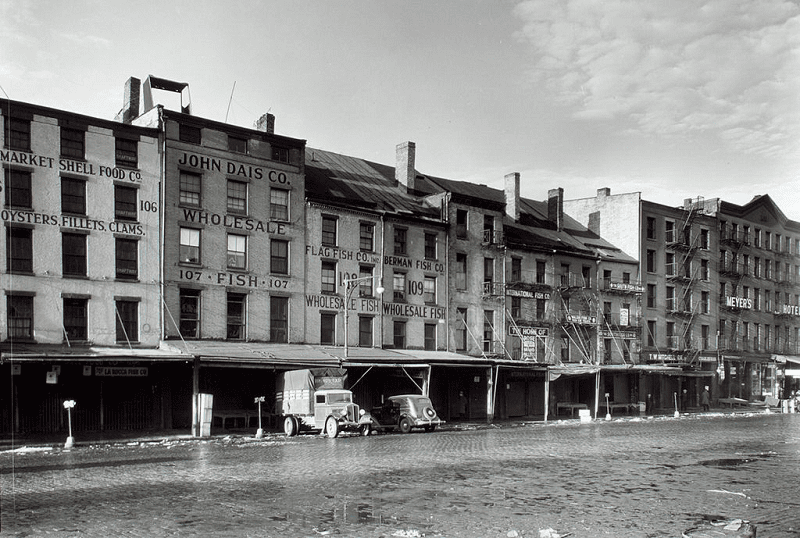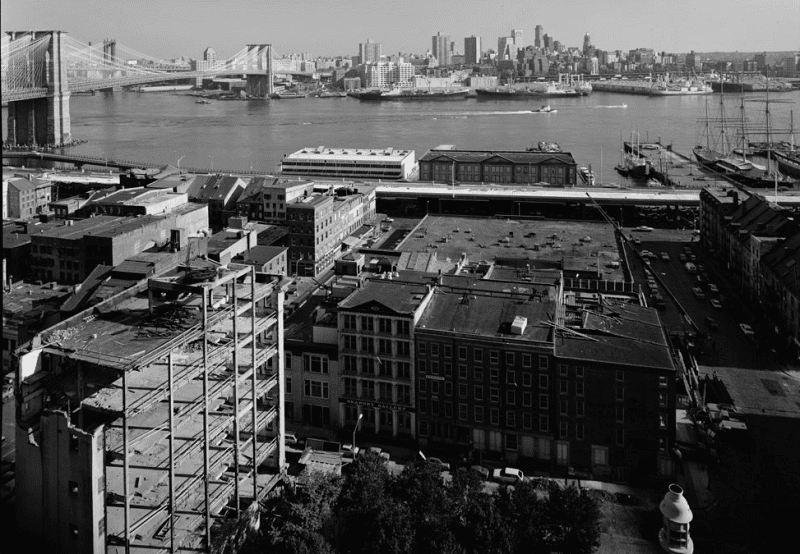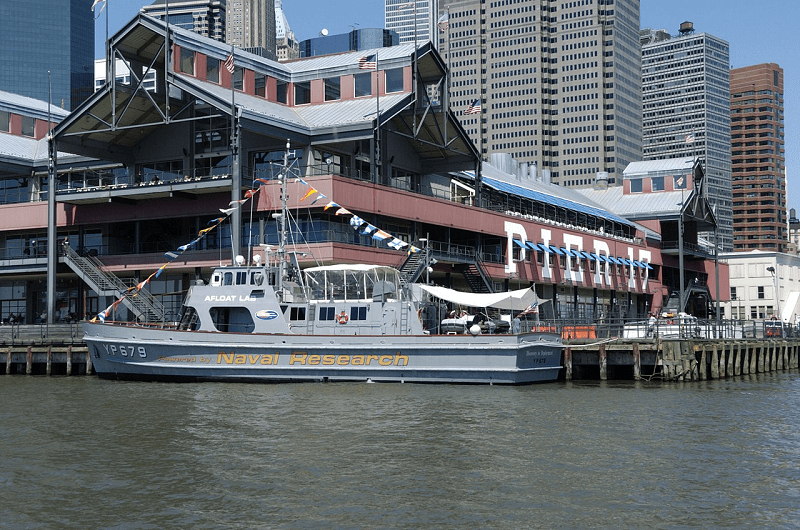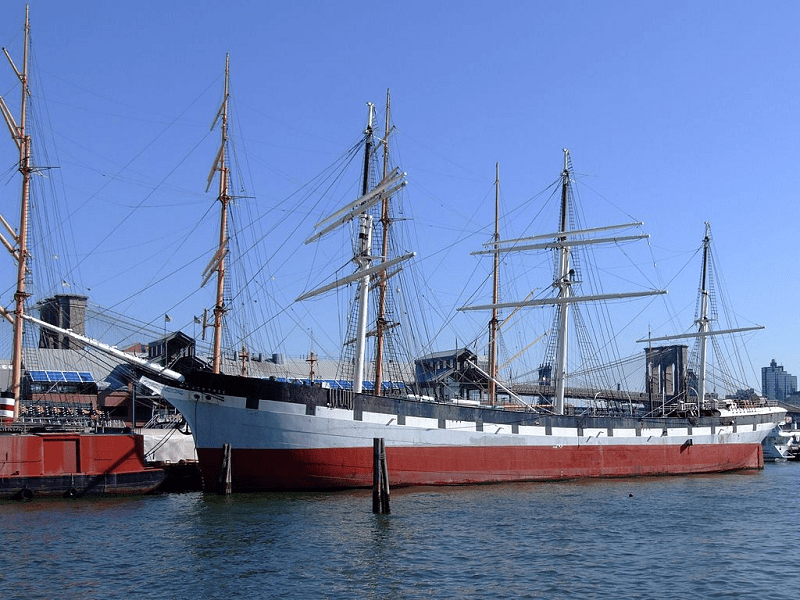The South Street Seaport (hereafter referred to as the port) is an important historic landmark in the Manhattan borough of NYC. The center of South Street is at the intersection of Fulton St and the East River, where they adjoin the financial district of Lower Manhattan, next to the famous Pearl St. Read more on manhattan-future.
The port not only serves as the city’s water transportation hub, it is also a distinctive neighborhood with a history that is somewhat different from the neighboring streets and blocks of the Financial District. The South Port of Manhattan is part of Manhattan Community Board 1, which is in the center of Lower Manhattan, bordering the Financial District on the west, southwest and north. The port has a water location near the East River. There are two bridges to the northeast, the Manhattan Bridge and the Brooklyn Bridge.
The port district is an example of some of the oldest historic architecture in Midtown Manhattan. It also contains a significant number of later restored buildings from the nineteenth century. Near the city’s southern port, there are also sailing ships of the past centuries that have been successfully reconstructed.
The work of South Street as a port in Manhattan
The first sailing from the port pier took place in 1625, the year the Dutch West India Company decided to establish an outpost at this location. In the seventeenth century, settlers gradually began to arrive at the port. The island began to be rapidly populated by new people. At that time, the leading street from the port became Pearl St, whose name comes from the pearl shells found on the territory adjacent to the river.

[Photo source: https://upload.wikimedia.org/]
The favorable geographical location of Pearl St (near the port) allowed the street to become popular not only among settlers but also among traders who came here. In time, the length of the East River narrowed, so it became necessary to expand the pier. This was done in the second half of the seventeenth century.
Since then, the pier ran along Water St, reaching Front Street, and later, in the early nineteenth century, South Street was also added to the pier area. The South Manhattan pier became even more popular over time because of its geographical location. The latter provided natural protection from westerly winds and ice from the Hudson River.
The War for American Independence and the port’s first competition
During the American War of Independence, the port almost did not function, as it was occupied by British troops in 1776. The negative impact on the port trade lasted for 8 years, and only in 1783-1784 did the situation improve. At the same time, a considerable number of merchants went back to England, and some of the port companies in the south of Manhattan stopped their activities. Nonetheless, the port managed to quickly recover from the postwar crisis. In 1797, it became part of the largest maritime trade system in the US. In the 1815-1860s, the port was named after the city of NY.

[Photo source: https://upload.wikimedia.org/]
On January 5, 1818, an important event took place in the port’s history. On that day, the 424-ton transatlantic ship James Monroe set sail from the port of Liverpool, thus initiating an intercontinental route from England to the US, later called the Black Ball Line. This route was used until 1878. In the 1820s, the first companies appeared, and their number grew due to commercially successful transportation between England and the US. In general, shipping, particularly from the port of Manhattan, made NY a key center for organizing world trade.
In 1822, a new company, Fulton Fish, was founded, which would later become one of the key transportation organizations near the South Street port. In 1825, in November, architects opened the Erie Canal, which is in the northern part of NY State. The Erie Canal serves to connect the ports of NY and Manhattan with the western part of the state. With the opening of this canal, economic development began for the city, but additional needs emerged: it was necessary to extend the length of the marine berths and deepen the port.
The Great Fire of New York, a period of prosperity and decline
In 1835, a great tragedy occurred not only for Manhattan, but for the whole of NYC. On December 17 of that year, a fire of considerable size broke out, causing destruction to the port. A significant number of nearby buildings burned to the ground. However, despite these circumstances, the port recovered by the 1840s, and another decade later, the heyday of the port began.

[Photo source: https://upload.wikimedia.org/]
As already mentioned, the 1850s saw a period of prosperity for the port near Pearl St: a large number of commercial enterprises, institutions, chandlers, workshops, boarding houses, saloons and other public buildings opened on the pier. However, by the 1880s, the port had already begun a period of decline. It was depleting, opportunities for the development of trade were decreasing and the depth of the port did not allow larger ships to enter it.
By the 1930s, not only individual port buildings, but also a significant number of piers had fallen into disrepair. Their work stopped, and other ports, such as the West Side and Hoboken, were generally engaged in unloading transport ships. All of the old Ward Line docks, which were still in operation until the late 1950s, finally shut down: the main piers of the port (such as parts 15, 16 and 17) remained empty.
Functioning of the port as a museum
Due to the decline of the port in the 1940s and 1950s, it was decided to repurpose it for educational purposes. Thus, in 1967, Peter and Norma Stanford founded the South Street Seaport Museum. The museum began to focus on the educational process as the place itself has great historical value. The entire territory of the museum has become a place to recreate the working environment that was used in past centuries during the port’s heyday.

[Photo source: https://upload.wikimedia.org/]
In 1982, a major reconstruction began on the grounds of the museum, with the goal of making the site more attractive to tourists. The project of such reconstruction was created by the prominent American developer J. Rouse. His concept was taken from the “festival market” (a leading strategy for the revival of the territory in the 1970s). On Fulton St, an upscale shopping center was built out of an ordinary garage space. The old port piers were removed and replaced with a shopping pavilion, which began operating in 1984.
When the development of the port first began in the seventeenth century, the owners’ initial goal was to preserve the architectural integrity of the buildings on the southwestern part of Fulton St (also known as Schermerhorn Row). Their efforts to preserve the historic landmarks of Manhattan’s approximate financial district were not in vain, they succeeded in realizing their intention.
Visiting the neighborhood of this port, everyone seems to return to the period of the mid-nineteenth century NY to see the commercial life of this place. Near the port there are several sailing ships of historical value. One of them is the Wavertree. Although the neighboring Fulton St has been preserved architecturally, the atmosphere of the trading process of that time will forever reign here…